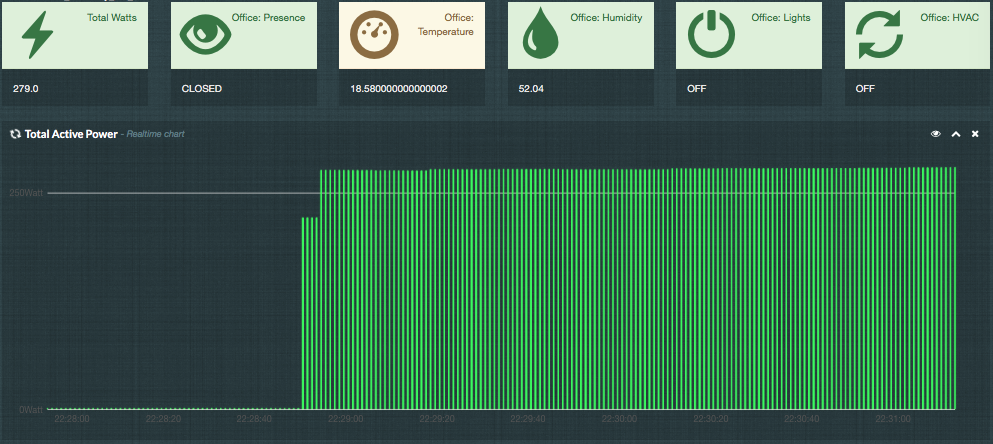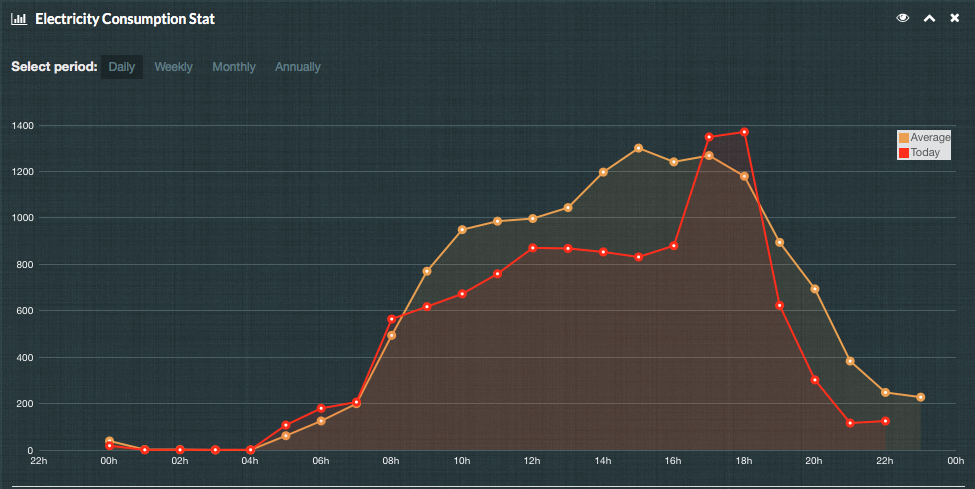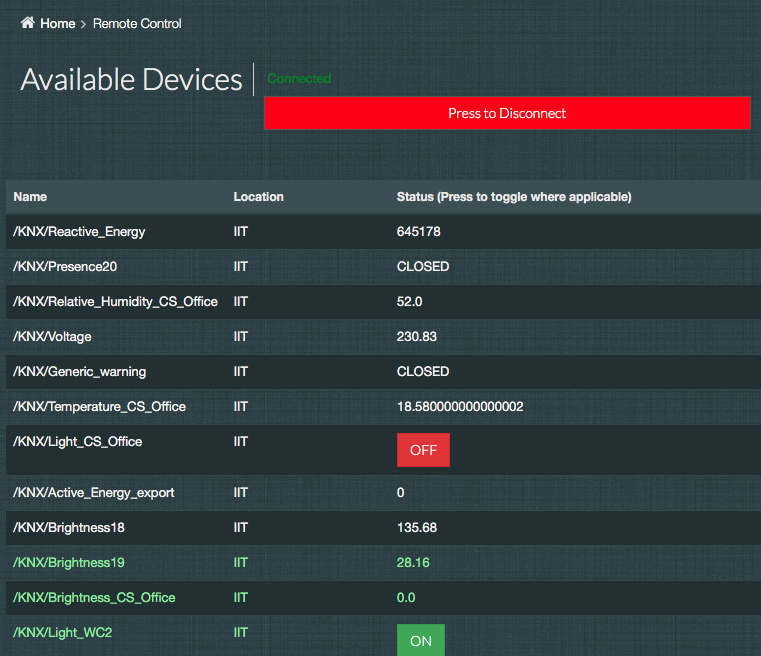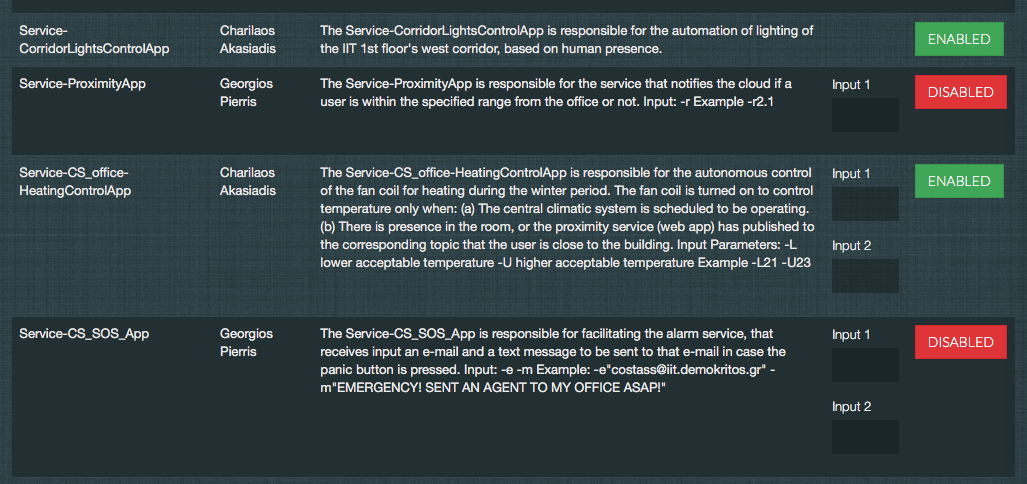Generally, in large work spaces it is quite often for lights and HVAC equipment to be left turned on even when it is not required, leading to energy waste and increased utility bills. As part of the project "Establishing a Multidisciplinary and Effective Innovation and Entrepreneurship Hub", the SYNAISTHISI platform was equipped to interface physical sensors and actuators, which have been placed inside a building. A plethora of installed devices are now interoperable with cloud processing services that promote energy efficiency, and can be personalized to fit the needs of each individual.
The main goal of this venture was to deliver a set of interoperable services with personalize-able features, for the efficient monitoring and management of energy usage. The system architecture is based on an Internet of Things approach, where the heterogeneous devices are virtualized and exposed to cloud services as independent SPA (Sensing, Processing, and Actuation) resources. The developed service "ecosystem" is open to incorporate personalized configurations to achive optimality on both single, and complex, service levels.
Below, we give a brief overview of the system architecture, and the capabilities that are offered by the GUI.

The core of the system is a complex service that serves as a Graphical User Interface to aggregate intuitive information from the sensors. The electricity consumption of the facility is also monitored, and, along with the sensor information, is presented to the users in a friendly way, both in real-time, and in the form of historical observations.


In a separate tab of the GUI, active KNX devices are discovered dynamically, and their associated measurements and states are presented. Through this tab, we also allow the remote control and monitoring of the connected devices.

Last, and more important, the user is able to incorporate cloud services that undertake to control the building's resources automatically. These cloud services are available in a form of a marketplace, and their parameters can be personalized, e.g. set specific thresholds, delays, and timeouts. The main feature of these services is that they can be easily deployed to even more facilities that share common characteristics with our case. The user can also enable and disable the automations on demand, via another tab of the developed GUI.
